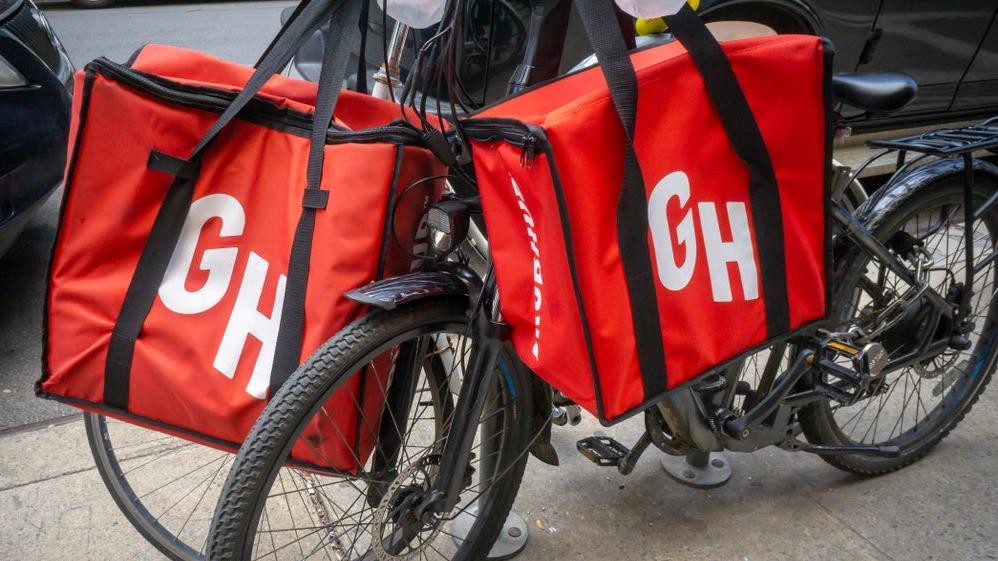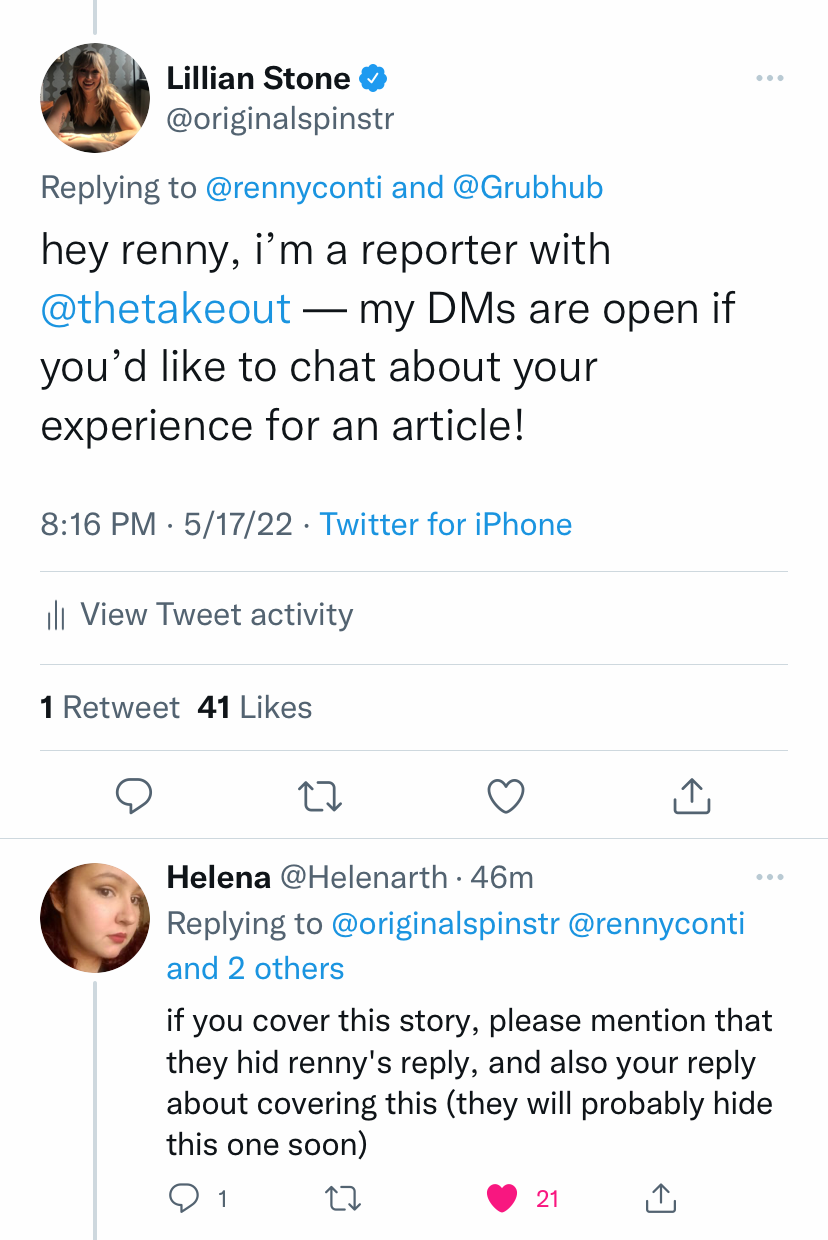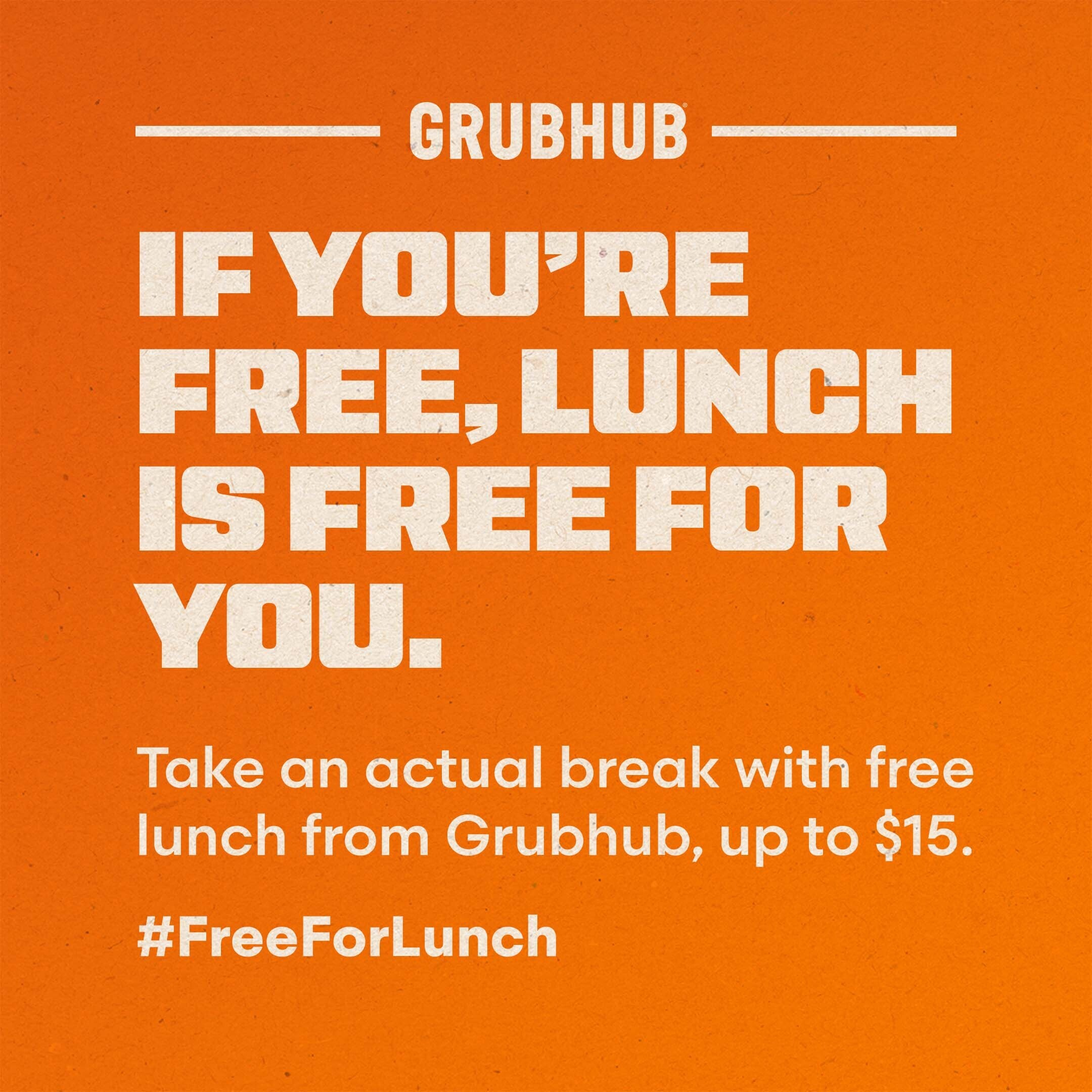Grubhub's Free Lunch Was A Fucking Disaster
The delivery app promised NYC office workers a free lunch. It... didn't work.
At first, yesterday's Grubhub promotion seemed like a bitchin' deal: between the hours of 11 a.m. and 2 p.m., customers in New York City could use the code FREELUNCH to score any meal up to $15 through the Grubhub app. Free lunch for all New Yorkers! What could go wrong? In short: everything.
When the clock struck 11, all hell broke loose. Mountains of unclaimed wedge salads congealed on restaurant counters as Grubhub drivers struggled to keep up with orders. Lethargic office staff waited for hours for lunches that, in some cases, never materialized. Frantic restaurant workers were thrown into an unending game of whack-a-mole as orders rolled in at dizzying rates. Now, a day later, the dust has settled to reveal disgruntled complaints across social media. Grubhub maintains that the promotion was a success—but a vocal contingent of participants are claiming utter failure. So what, exactly, caused the Great Grubflub of 2022?
Problem 1: Ill-equipped delivery drivers
Michael, a Grubhub driver of nearly three years who asked to remain anonymous, tells me that Grubhub drivers were informed of the promotion via email about a week in advance. He says drivers were encouraged to "log in during these hours to earn big," which was exciting—until the drivers realized that Grubhub lacked the logistics to drive such an ambitious promotion.
"My main problem came from Relay, which some restaurants actually use to dispatch Grubhub delivery orders," Michael says. (The Relay website notes that the company "delivers orders from all your platforms so that you can keep using third-party apps for your restaurant's marketing, while cutting your delivery commissions.") Michael adds: "Relay was absolutely not prepared; their system crashed. I never received support when I asked. They were very silent today."
Meanwhile, restaurant workers watched as abandoned orders accumulated in their eateries. "Hey everyone, I am the General Manager of a popular lunch spot in Manhattan," tweeted one restaurant worker. "GrubHub did not have enough drivers on the road today to handle the volume of orders. We had to turn off our GH ordering because no one was coming to take the deliveries to the customers."
Problem 2: High delivery demand
It's possible that the mass confusion could've been resolved with lower order volume. Unfortunately, the promotion created a kind of hysteria that frustrated even the most seasoned delivery drivers.
"While we knew 72% of New Yorkers call lunch the most important meal of the day, the demand blew away all expectations," a Grubhub spokesperson told me over email. "It was unprecedented and at times we were receiving 6,000 orders a minute."
The spokesperson added that the app fulfilled more than 450,000 lunches connected to the promo—but some customers still slipped through the cracks.
"Y'all cannot handle this load lol don't do this again," one Twitter user replied to Grubhub. "I ordered at 12:40, food was supposed to be here between 1:20 – 1:30. It's 2:50 and I've been hung up on (twice) by customer service and chat is unresponsive."
Another user wrote: "My workplace placed an order for us to be delivered at 12:30. We didn't know there was a promo in place. It is now 3:45 & I am hungry AF."
I should note that a number of Twitter users took to the platform to complain that Grubhub's social team was hiding their disgruntled tweets to skirt the PR disaster. At first glance, it seemed as though the company also hid one of my tweets (see left) in which I asked a frustrated restaurant worker to comment for this article.
When I saw my tweet was hidden, I reached out to Grubhub to ask about the decision to hide the tweets. "These were not hidden by Grubhub, nor do we have access to do that," the spokesperson told me. "This is either done in someone's own personal settings or by Twitter, so I'm not sure what the cause was here."
(Quick note: All Twitter users have access to the "hide reply" function.)
I also asked about the strain on restaurants, to which the spokesperson responded: "While unfortunately some restaurants did experience a strain, which we will learn from and optimize to help mitigate in the future, thousands of restaurants benefited from this lunchtime boost. And lots of diners were happy! Win win."
Win... win.
Problem 3: Communication between Grubhub and restaurants
The final nail in Grubhub's coffin: an alleged failure to communicate with some restaurant owners and managers about the promotion.
"To help businesses prepare for yesterday's promotion, we gave advance notice to all restaurants in our network, which included multiple forms of communications across various platforms," the Grubhub spokesperson told me via email. A New York Post article from last week confirms that restaurants were informed about the promotion in advance and weren't "planning to staff up or purchase more food." Unfortunately, some restaurant workers say they received no notice at all.
Consider this tweet, which some Twitter users speculate was hidden by Grubhub. (I reached out to the tweet author, who told me he went private on Twitter after the tweet was allegedly hidden by the company.) "Currently working front of house at a restaurant in brooklyn and you guys big time messed up," the Twitter user noted. "we have over 30 cold orders not being picked up by drivers and our phones are off the hook with angry customers. absolutely fucking over the entire NYC service industry today."
I also spoke with Emily, who asked to remain anonymous but confirmed she works as a manager at a Chipotle in the affected area. "There was no form of communication from Grubhub that trickled down into the stores," Emily told me. "I noticed how busy our digital make lines were getting and everyone was like, no way, it's just peak hours. But we kept getting slammed with 40+ orders every half hour and it kept growing."
Emily notes that the team was left to execute roughly 150 orders per hour, including orders that included multiple entrees and sides. "You'd clear one order and five more would pop up," she says. To make matters worse, a lot of those orders went unclaimed.
"So many got left behind," she says. "We had to take our regular orders on top of theirs so it was definitely chaotic."
Had her Chipotle store been informed of the promotion, Emily explains, she would have been able to staff the location accordingly.
"The fast food, fast casual, and any quick service restaurants definitely got overwhelmed heavily," she says. "We were severely understaffed for the amount of food we had to push out."
To contextualize the issue, she notes that the store goes through two pots of each kind of rice—brown and rice—on a standard high-sales day. "Today my grill guy said he cooked a pot of each rice every hour," Emily says.
What could Grubhub have done differently?
The Grubhub spokesperson noted that the company is planning to "learn from and optimize" the strain reported by restaurants and customers "to help mitigate [these issues] in the future." I didn't get much clarification on that strategy—but if Grubhub attempts a similar promotion in the future, drivers and restaurant owners have some requests.
"Honestly I understand that thousands of restaurants, small, medium, and large corporations use Grubhub, and there's no way to trickle down that information to everyone," Emily says. "But this needs to be planned months out and give knowledge to the large businesses who see tens of thousands of dollars daily."
Ultimately, Grubhub's failure is inextricably linked to the messaging that drove the free lunch promotion. One pithy promo image suggests that customers "take an actual break." Another notes that New York office workers "grind too hard not to be treated" to free lunch. The marketing lingo rings especially hollow today, 24 hours after restaurant workers and drivers were thrown into hours of frenzied labor to cater to Grubhub's marketing whims. One look at Grubhub's marketing strategy, and it's eerily clear who deserves to be "treated."


